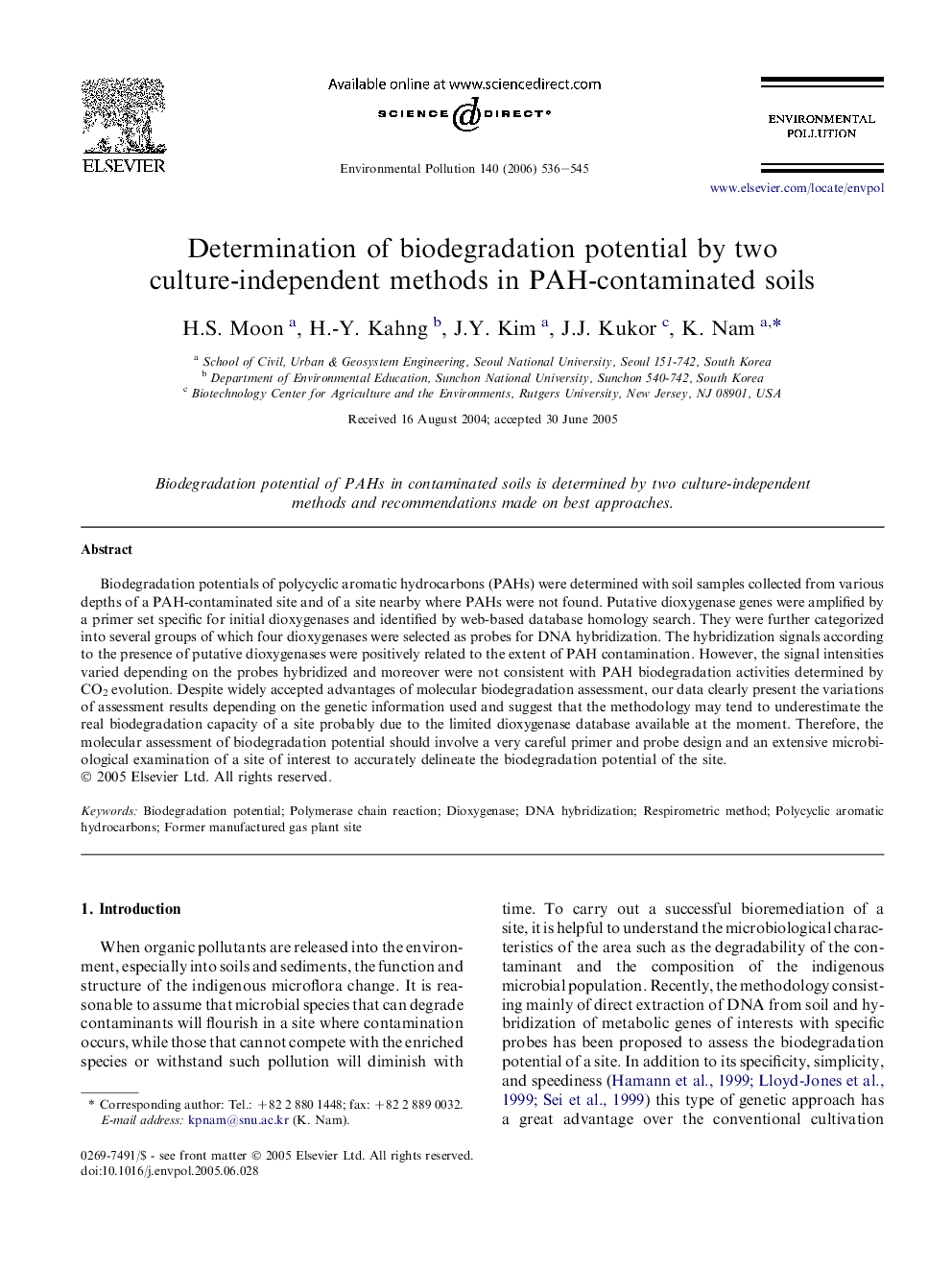| Article ID | Journal | Published Year | Pages | File Type |
|---|---|---|---|---|
| 4427485 | Environmental Pollution | 2006 | 10 Pages |
Biodegradation potentials of polycyclic aromatic hydrocarbons (PAHs) were determined with soil samples collected from various depths of a PAH-contaminated site and of a site nearby where PAHs were not found. Putative dioxygenase genes were amplified by a primer set specific for initial dioxygenases and identified by web-based database homology search. They were further categorized into several groups of which four dioxygenases were selected as probes for DNA hybridization. The hybridization signals according to the presence of putative dioxygenases were positively related to the extent of PAH contamination. However, the signal intensities varied depending on the probes hybridized and moreover were not consistent with PAH biodegradation activities determined by CO2 evolution. Despite widely accepted advantages of molecular biodegradation assessment, our data clearly present the variations of assessment results depending on the genetic information used and suggest that the methodology may tend to underestimate the real biodegradation capacity of a site probably due to the limited dioxygenase database available at the moment. Therefore, the molecular assessment of biodegradation potential should involve a very careful primer and probe design and an extensive microbiological examination of a site of interest to accurately delineate the biodegradation potential of the site.
